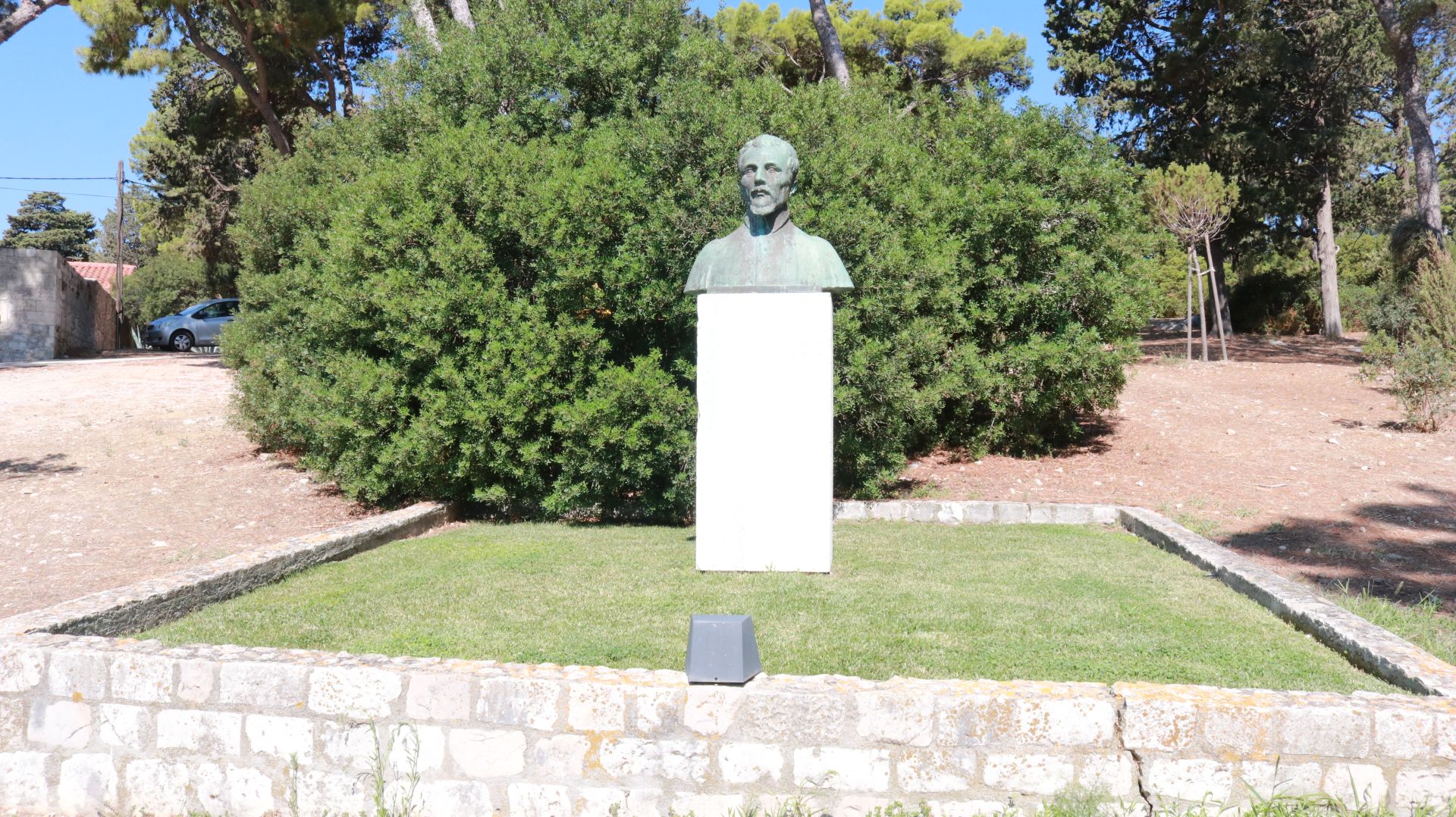Ministry of Culture Shortlisted For World Literacy Awards
ZAGREB, 8 Sept, 2021 - The Croatian Ministry of Culture and Media has been shortlisted for the World Literacy Awards in the category "Significant Contribution to Literacy by a Nation" for its "Year of Reading" campaign, and the laureates will be declared on Wednesday evening on World Literacy Day.
The World Literacy Awards are annual recognitions given to valuable initiatives around the world that promote literacy and education, the ministry said on Wednesday.
They are divided into several categories and given to individuals and organisations for their outstanding endeavours that promote literacy. The laureates are selected by a panel of judges consisting of eminent leaders from across the globe, including literacy and literature experts, Nobel Literature Prize recipients, and award-winning authors.
Croatia has one more candidate who has been shortlisted, Prof. Anita Peti-Staničić, who has been nominated in the Academic Award category.
Her work on reading literacy consists of two tiers, both equally important and complement each other. The first is her publishing activity. The second is her activist work on putting reading literacy in the centre of interest of librarians and teachers at all school subjects.
The government declared 2021 The Year of Reading. The declaration of The Year of Reading is part of a measure from the National Strategy to Promote Reading, adopted in 2017.
International Literacy Day is an international observance, celebrated each year on 8 September, declared by UNESCO on 26 October 1966 at the 14th session of UNESCO's General Conference. It was celebrated for the first time in 1967.
For more about politics in Croatia, follow TCN's dedicated page.
KUF Festival 2021: Circus Takes to Zagreb Streets
September 3, 2021 - The KUF Festival 2021 is the third edition of a Cultural Street Festival that brings the circus to the streets of Zagreb. Organised by the Cirkorama collective, you can enjoy the crazy acrobatics, hilarious performances, and more in the following September weekends.
The Cirkorama collective has been known in Croatia for years for promoting the art of circus through various types of education, shows, street performances, and projects. There will certainly be a lot to do while juggling all the events in Zagreb over the September weekends to come.
These events will all be part of the KUF-Cultural Street Festival, which is now in its third edition, and will bring street art performances to all parts of Zagreb, starting this weekend (September 4-5) in Sopot. After that, it will follow with performances in the neighbourhoods of Vrbik (September 11-12), Mažuranac (September 12), Borongaj (September 18-19) and concluding in Vrapče (September 18-19). This is an excellent way to continue on the same path after Zagreb's handful of events in August.
''The Cultural Street Festival is dedicated to street performances, local artists, and the local population. Its goal is to present the art of urban street culture and circus art throughout Zagreb's neighbourhoods. Therefore, the festival this year, just like in the previous ones, will travel to the city's neighbourhoods providing its residents circus-like street shows for all ages,'' said the festival organisers in a press release.
On a mission to enrich the City of Zagreb with cultural content, the ease of hitting the right street to enjoy the show is paired well with ticket-free entertainment.
The founders of Cirkorama are indeed pioneers of circus arts in Croatia, as they were the first to bring juggling and stilt walking to Croatian cities. These forms of entertainment on the streets were soon followed by acrobatics on silk and much more.
Projects promoting the modern circus with partners such as the Red Cross were aces for Cirkorama to show that the joys of the circus aren't only limited to specific locations and inside tents. With circus shenanigans being much more enjoyable than Zagreb's usual traffic accidents, head over to the designated areas to enjoy it this month.
What better way to get hyped for September than by checking out the bit of action in this video:
Learn more about Cirkorama on their Youtube page, featuring performances and a serious discussion on the art of circus.
Learn more about Zagreb on our TC page.
For more about culture in Croatia, follow TCN's dedicated page.
Iron Age Danube Route Recognised by European Council
August 20, 2021 - The Iron Age Danube Route is a new addition to the Croatian offer, relevant not just for tourism but for science, research, and education, and recognised by the European Council.
The Iron Age Danube Route addresses one of the most fragile, though imposing and attractive prehistoric archaeological phenomena, the Iron Age landscapes. Characterised by monumental structures, such as burial mound cemeteries, flat cemeteries, fortified hilltop settlements, and oppida, as well as elements indicating the complex organisation of space, Iron Age landscapes belong to the period between the 9th and the end of the 1st century BC, according to the official website of the Iron Age Danube Route Association (IADR).
This association was founded back in July 2020 with the goal of enhancing international scientific cooperation regarding the period of the Iron Age, as this is a period marked by an extraordinary corpus of movable and intangible heritage. The focus on the Danube region is, among other things, owing to this heritage being housed in numerous museums across the Danube region, including the most important regional and national institutions.
''Compiling the existing sources of knowledge and creating a strong interdisciplinary and international network of expert institutions from Austria, Croatia, Hungary and Slovenia in the fields of archaeology, cultural heritage protection, tourism, as well as local stakeholders, the Iron Age Danube Route Association was founded in July 2020 with the aim of the further development and management of the IADR,''
The Archaeological Museum in Zagreb is one of the founding partners of the association, and other institutions from Croatia include the Centre for Prehistoric Research, Kaptol County, Papuk Nature Park, and Faculty of Humanities and Social Sciences at the University of Zagreb. Other partners include museums and faculties from Hungary, Austria, and Slovenia, all bringing their top experts in the field to the table for the association to work.
And that work paid off. As reported by the Archaeological Museum in Zagreb's website, the European Council granted the culture route certificate to the Iron Age Danube Route which stretches through Austria, Bulgaria, Croatia, Hungary, Germany, and Slovenia.
''This is the first culture route of The European Council with its headquarters in Croatia“, said the Museum's website adding that the route is managed by the Association.
''The Iron Age Danube Route matched the criteria by the five priority fields of action by the European Council. These include cooperation in research and development, the progression of European heritage and history, educational exchanges, youth culture, engagement within the frame of the current cultural and artistic practices and sustainable cultural tourism development,'' explained the website.
The certificate is important as it enhances the overall visibility of the sight, allowing the public to become better informed about the area, and enriching the overall Croatian cultural and tourist offer, creating new opportunities both for business and for scientific and educational purposes.
Did you know Vukovar is located along the Danube river? Learn more in our TC guide.
For more about Croatian history, follow TCN's dedicated page.
Croatian Invasion Video: Meet Cult Swedish Comedy Group Grotesco
Aug 20, 2021 - Have you ever seen the hit Croatian Invasion video? Watch it now and meet the hilarious Grotesco comedy group from Sweden!
Being a small country, Croatia has wanted global recognition since its beginning. This doesn't just refer to the political recognitions and diplomatic relations, but also to make its way into global pop culture. And, of course, hoping it will be in pop culture in a good way, not the Borat way like the country of Kazakhstan.
Back in 2011, the animated American sitcom „Ugly Americans“ (that follow a New York full of demons, zombies, and other magical creatures) made the news in Croatian media with a short clip of one of the characters eating a dead body and saying „My first Croatian, oh it tastes like Serb. “
As evident by comments, while some laughed at the edgy adult humor, many also expressed their dissatisfaction in 24 Sata's comment section, feeling insulted by the clip.
Because America is America, almost anything published there travels globally as media content, but the same can't be said for some other countries.
One such example is Sweden, where back in 2007, the „Croatian Invasion“ sketch was released by the comedy group Grotesco.
Check it out for yourselves.
To be frank, watching the video stunned me before I laughed through tears, although I really had no clue what the video was about. A quick internet search only informed me that Grotesco is a comedy group and that there is no music album to buy from them. But what was the message of the video? How popular is it in Sweden?
In the tradition of Croatians and other Balkan people going to European countries to work and live, Sweden is one of the many preferred destinations.
Early work of the popular comedy group
Vladan Laušević came to Sweden in 2003 as a teen from Bosnia and is today based in Stockholm, mostly working as a social entrepreneur. In 2017, he started writing as a columnist for a social and cultural magazine, Opulens, and his main responsibility later became taking care of the English section Opulens Global. He is also active in Croatian media, occasionally writing for Liberal.hr.
It was in an article Laušević wrote for Liberal.hr about Cuba that revealed one of his contacts sent him the „Croatian Invasion“ video, as comedian Michael Lindgren's experiences in Cuba was the focus of the piece Laušević wanted to present to the Croatian public. „I was not familiar with the video before, but I recognized comedian Michael Lindgren and his humor collective Grotesco. When I moved from Bosnia to Sweden in the early 2000s, I started watching television also to learn Swedish and often was able to see Grotesco since they are a very famous comedy collective“, explained Laušević.
He added that during the 2000s, ads for Absolut Music compact disks (CDs) were viral, so he saw Croatian Invasion as a parody of those ads.
„Also, one must keep in mind that Lindgren and his alter ego Dj Trexx are making fun of Eastern European stereotypes and former communist countries. For me, it was funny to see that "Croatian Invasion" was like a predecessor of Dj Trexx's later videos, such as about Russia and the former Soviet sphere, “Laušević pointed out.
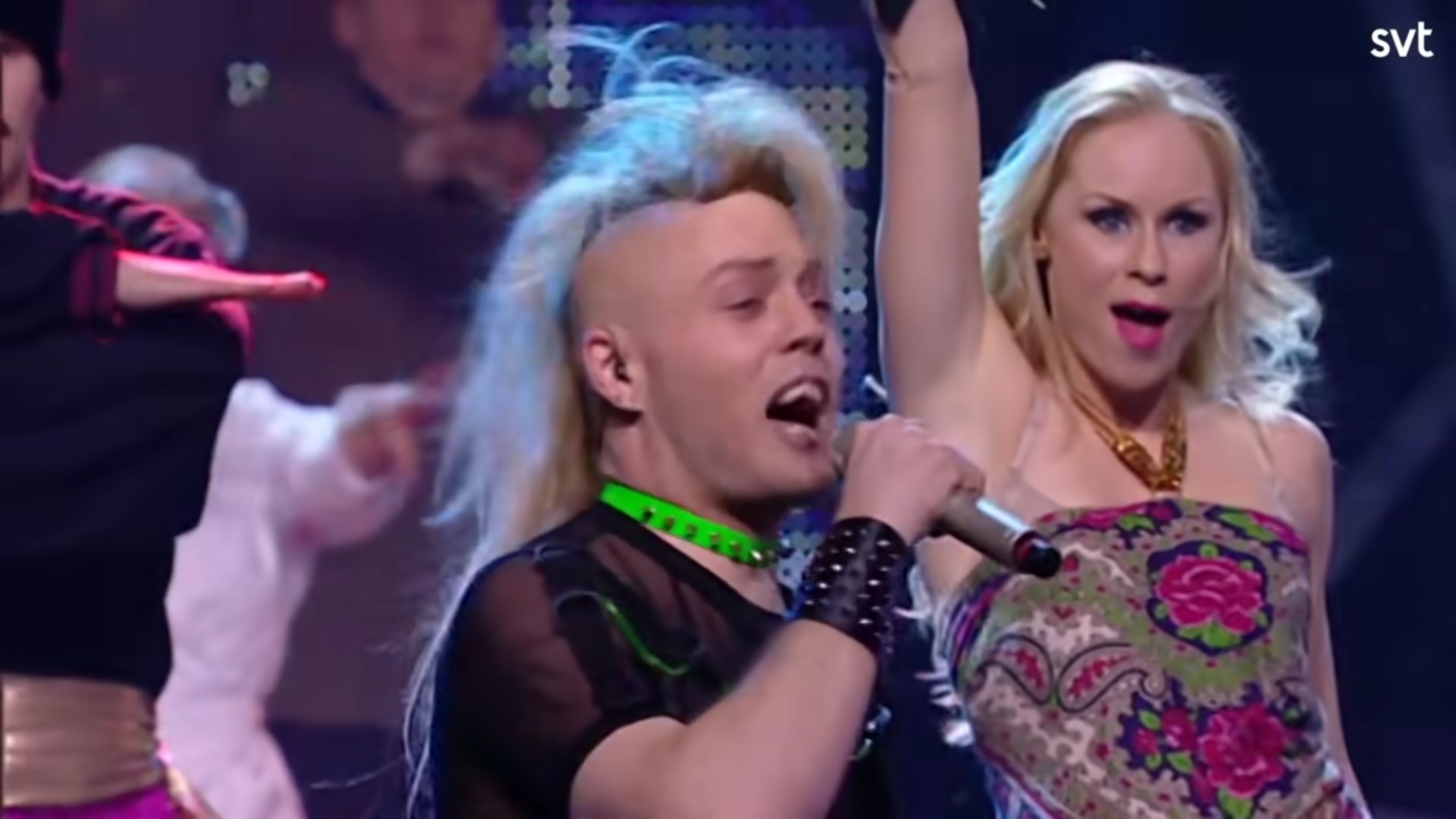
DJ Trexx (Michael Lindgren) in the middle of the performance, screenshot / SVT
Humour in Sweden is well developed on many levels, from stand-up comedy and beyond. Referring to the comedy scene in Sweden, Laušević revealed that the Grotesco collective is mainly based on political parodies. For example, how Sweden dealt with the refugee crisis in 2016 or in real-life situations such as how parents behave during a school meeting.
„So when it comes to the video itself, it is more special because Dj Trexx was specialized in making parodies on stereotypes and cliches about Eastern and former communist Europe. I would not be surprised if Lindgren used to listen to techno music and watch videos from Croatia in the mid-2000s to develop his humor agenda“, concluded Laušević.
He isn't sure how popular or famous the video was during the late 2000s, but today Laušević saw that the video had been mentioned in different chat platforms and forums as one of Dj Trexx's early works.
When it comes to the impact on the impressions of Swedish people about Croatia, the video isn't the trigger for any particular opinions about the country.
„I have only received a few questions about the video from people I know and who are older and remember it from the 2000s, and our discussions were mostly based on cliches and stereotypes regarding former communist countries. I have mostly seen and heard positive stories and experiences from my contacts and others when having spontaneous conversations about Croatia. It mostly has to do with tourism and the seaside because many Swedes love to go to Croatia during summertime. Older generations had positive experiences from vacations when Croatia was a part of Yugoslavia, while younger ones have more experiences with modern Croatia“, described Laušević.
Improvised writing and pure fun
Thanks to Laušević's well-established Swedish contacts, Michael Lindgren, aka Dj Trexx of the Grotesco collective, recalled for TCN how the video was made.
„The original idea for Croatian Invasion was just to let our prejudices about the Eastern European electronic scene run wild. No deeper thoughts. My colleague and I were improvising while writing; I think we were quite drunk“, said Lindgren. „The video was a skit in the first season of our sketch comedy show Grotesco in 2007. The overall reception was good, although it was kind of a cult hit. Our broad breakthrough in Sweden was in 2009 when we made the entertainment part of the Swedish Eurovision competition Melodifestivalen“.
While at the start, DJ Trexx was Croatian, he later turned Russian. Humourous provocation (see the song "Tingaliin") and artistic experimenting lead to the change of the character that continues to explore social solidarity and liberal freedom.
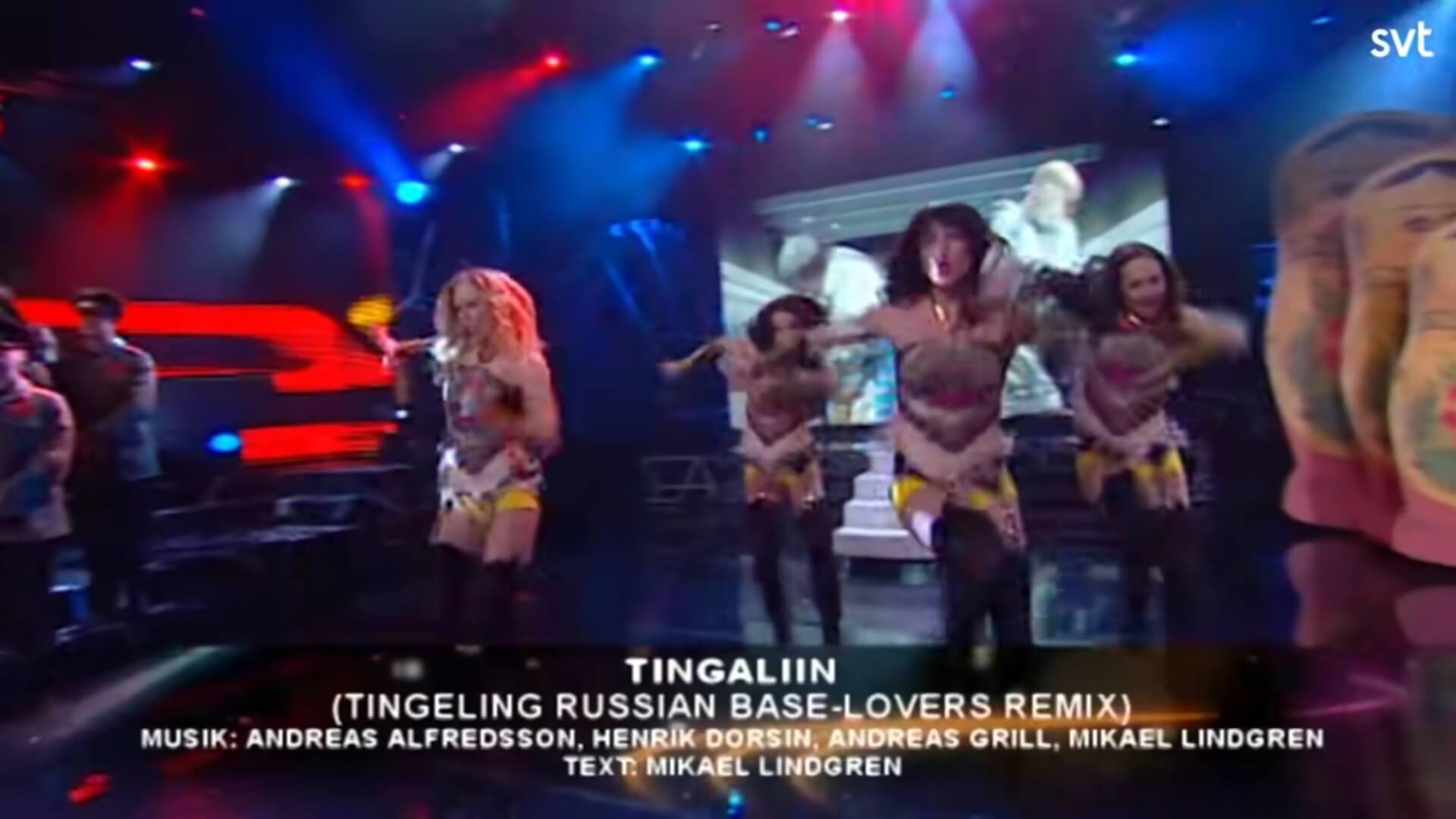
Performance of Tingaliin a parody of Eastern Europe stereotypes at Melodifestivalen 2009, screenshot / SVT
„Trexx evolved from Croatian Invasion. He became defined as Russian-East-German when we did Tingaliin in 2009 (because Russia was hosting Eurovision that year). I think he reflects a part of me that I wanted to experiment with all alter egos. He was born in East Berlin “behind the wall” (son to a red army officer and a German concert violinist), but he loved western electronic techno. Maybe I liked that story because I was a Swede struggling with the ideas of socialist solidarity and safety vs. liberal freedom. Trexx also loves the idea of a free united Europe“, described Lindgren.
Stating how he doesn't know any Swedish-Croatians personally, Lindgren's general impression is good with no particular prejudice.
„Croatian Invasion was just pure fun, not really meant to say anything intellectually - maybe a love-hate tribute to our prejudices about the newly liberated Eastern European techno scene around the 2000s. Also based on the eclectic and, through Scandinavian eyes, over the top and sometimes bizarre acts in Eurovision from the previous Eastern bloc“, concluded Lindgren.
In the end, he hopes he will have a chance to visit Croatia someday, and with Swedes having a positive experience in the country, it would be awesome for the Swedish celebrity to also enjoy the country and perhaps even visit some of the many electronic music festivals Croatia has to offer. Particularly on Pag's Zrće beach.
Learn more about various Croatian destinations on our TC page.
For more about Croatia-Sweden relations, follow TCN's dedicated page.
Croatian Poet Hanibal Lucić: Renaissance Genius from Hvar
August 14, 2021 - Meet Croatian poet Hanibal Lucić, one of the most respected poets from the country's renaissance period and a noble man from the island of Hvar. This is his story.
The richness of Croatia's heritage is evident not only in its many breathtaking buildings, statues and sights but also in its literature. Sadly, Croatian literature doesn't attract as much global attention as it should when compared to the global impact and various language translations that names such as Shakespeare enjoy. Not to mention antic Greek poets and writers, Italian authors such as Dante, and the list goes on.
Things are changing for iconic writers from Croatian history, such as 20th-century writer Miroslav Krleža as well as many of the modern, still active writers, thanks to the Croatian Literature site powered by the Croatian Ministry of Culture.
Prose writing doesn't have too many challenges for a professional translator when it comes to shifting the story from its original language to another, but you can be sure poetry is another story. If you read an English translation of ''The Flowers of Evil“ by Charles Baudelaire, instead of the original French version, did you really read Baudelaire or an author who made an adaptation of the poem into English in as much as was possible?
Either way, not much work done by Croatian poets is widely translated and known globally, but the Croatian poets themselves are known, and their former residences venues carrying their names and statues dedicated to them are part of the cultural offer Croatian destinations have to offer to their visitors.
In Hvar town, not too far from Veneranda, where the former church and famous former Hvar weather station lies, you can find a bust of a bearded man facing the Adriatic sea, and his eyes look as if they have that filter of lyricism, that poet-style introspect in observing the world. That should come as no surprise as the portrayed citizen of Hvar is non-other than Croatian poet, Hanibal Lucić, a nobleman from Hvar.
The exact date of his birth in 1485 isn't clear, but his date of death, December 14, 1553, is well recorded. The Croatian poet Hanibal Lucić was a renaissance poet as well as a playwright who authored the first secular Croatian drama titled ''Robinja'' (the slave woman). He served the Hvar Municipality back in the time when it was part of the Venetian Republic as a judge and a lawyer. His writings feature the Croatian Čakavski dialect (which distinctly uses the word ča for ''what''), and he wrote love poetry under the heavy influence of the legendary love poet Francesco Petrarca. Lucić was notoriously self-critical, and he even burned his work. Thankfully, his son saved his work and it was published in 1556, after his death.
Hanibal Lucić bust © Nina Lelas
In 2012, the National and University Library in Zagreb (NSK) posted an article in memory of Lucić, stating that he was the greatest writer of Croatian Renaissance poetry.
''We can gather from his literary works that he was exceptionally well-acquainted with classical literature, the Croatian Glagolitic and oral tradition, and the contemporary Italian and Croatian writing of his time. In his poetry, Lucić celebrated his love for women and for female beauty. In their aesthetic quality, Lucić’s poems represent a true masterpiece of Croatian renaissance lyric poetry. He describes beauty and love in the tradition of Petrarch, at the same time drawing on the oral tradition of Croatian love poetry,'' wrote NSK.
His poem „Jur ni Jedna na svit vila“ (No Other Nymph Upon This Earth), one of Lucić's most well-known poems, is an obligatory poem to read in the Croatian education system. You can learn more in this English version of a science paper by Tomislav Bodgan.
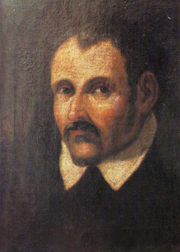
Portrait of Hanibal Lucić © National and University Library in Zagreb (NSK)
On Hvar, his summer residence still stands, and it's open to tourists to visit as its now the headquarters of the Hvar Museum.
''His summer house, the headquarters of the Hvar Museum, is a well-preserved example of the country houses of the Renaissance period, but with clear Gothic influences. Included in the museum is a reception room dedicated to the memory of Hanibal. The museum is also home to the local branch of the Croatian state archives. The opening hours are as follows: 09:00 -13:00 and 17:00 – 23:00 in summer, 10:00 – 12:00 in winter (by appointment),'' wrote Paul Bradbury for Hvar's dedicated Total Croatia page.
So, when in Hvar, do find time to visit the house but also don't forget to visit his bust and seek one of his pick-up lines that can help your banter with that pretty girl on the beach.
Learn more about Hvar on our TC page.
For more about Croatian history, follow TCN's dedicated page.
AEPO-ARTIS: Croatia Making Position of Performing Artists Difficult
ZAGREB, 3 Aug, 2021 - AEPO-ARTIS, a non-profit organisation that represents over 650 performing artists, has sent a letter to the Croatian culture minister criticising Croatia for being late with the adoption of new copyright legislation and missing a deadline for the implementation of two EU directives, the Croatian Musicians Union said on Tuesday.
The organisation said that the implementation of the Copyright Directive and the Directive on online transmissions and retransmissions was being delayed because Croatia was late with the adoption of the new Copyright and Related Rights Act.
The letter, signed by AEPO-ARTIS secretary general Ioan Kaes, says that the COVID-19 pandemic has widened the gap between the growth of profit by online giants and individual artists because the latter do not participate in the fair distribution of this turnover.
The situation is particularly dramatic because in the new business circumstances the turnover of online platforms has become a dominant source of income for the music industry. For over a year and a half, performing artists have been denied their basic source of income - live performances, while at the same time the use and turnover of their recordings increased and performers could not enjoy their rights equally with others. Although their works still reach wide online audiences, artists receive small or no remuneration for them, according to the letter.
The institute of performers' inalienable right to remuneration is not incorporated into the proposal for the new Copyright and Related Rights Act, and under the proposal, record companies would be given an additional three years to adjust their business. This would allow Croatian record companies to continue their unfair and unethical practice of blackmailing performing artists and not paying them for the performances that have been used by online services for years, the letter said.
AEPO-ARTIS concluded by saying that introducing the inalienable right to remuneration, which artists would be able to exercise through their collective management organisations, is the best, if not the only, solution that guarantees that artists receive appropriate and proportionate remuneration for their work.
For more about politics in Croatia, follow TCN's dedicated page.
Total Croatia in Ukrainian: Word of Support by Former Ukrainian Diplomat and Writer Jurij Lisenko
July 12, 2021 - As the Total Croatia site offers translations on all things Croatian in various languages, former diplomat and a famous Ukrainian writer Jurij Lisenko gave his opinion on the Ukrainian translations of the articles. Check out the video, acquired by Ivor Kruljac and edited by Jose Alfonso Cussianovich.
The tourist season is underway, and the goal is to get tourists from all over the world while providing safety in challenging times of corona – both for locals and visitors. As TCN reported, despite the tourist season in 2021 already being 58% better than that of 2020, it also seems that even with predicted Croatian tourism growth for this year, 2019 levels are very far.
With these predictions, Croatian tourists boards should do as much as possible in informing and promoting Croatia to have the best possible outcome. But given that doesn't always work out for the best, TCN is here to help.
Total Croatia: TCN's Multilingual brother
Well, more precisely, not TCN but rather TC or Total Croatia, if you will, the sister site that explains Croatia in detail. TC offers you in-depth articles to explain Croatia from head to toe: What you need to know about Croatia, how to come and travel around the country, detailed views on Croatian destinations, and info on everything you can see and do during your stay.
In addition, articles are translated to various European and world languages!
Word of support from an established Ukrainian writer
One of these languages is Ukrainian and in an effort to see how we did, we reached out to a Ukrainian writer Jurij Lisenko.
„Regarding the text itself, it is really well written. It contains very significant specific business information on various aspects, such as finding apartments or finding jobs for foreigners. At the same time, it is written lively, objective, bit ironic, but with great love for Croatia“, said Lisenko commenting on the Ukrainian translation for the article „Living In Croatia“.
Check out the video to see his verdict for yourselves.
Jurij Lisenko sends a special greeting to Total Croatia News and Total Croatia from Ukraine.
Famous Ukrainian writer helping Croatian writers
In a pool of quality Ukrainian writers, Jurij Lisenko is particularly interesting, not just for his excellent writing, but also as he was a former diplomatic advisor at Ukrainian Embassy in Zagreb.
As Akademija Art wrote, Jurij Lisenko was born on May 9, 1958 in Kyiv. Educated in Slavic languages, he lectured the Ukrainian language as well Serbian-Croatian in the Journalist faculty in Kyiv from 1980 to 1997. He also published over 20 scientific papers on philology and is a known poet publishing under the name of Jurko Pozajak. In 1998 he moved to diplomacy and worked for the Ukrainian Embassy in two terms (1998-2002 and 2013-2017), and also in Embassy in Belgrade, Serbia, from 2004 to 2008. He was also a speechwriter for Ukrainian president Viktor Juščenko and continued to work for Ukrainian's Ministry of Foreign Affairs since 2017.
Lisenko captured the attention of the Croatian public when along with his daughter Daria, he made new Croatian words, and the two co-authored a book of poetry for kids „Ide Svašta!“ (Everything coming).
As Večernji List reported back in 2016, their book was published back in 2002, and an expanded edition was printed in 2014.

Jurij Lisenko reading his poetry at the exhibition opening of Ukrainian folklore "Petrikivski Rospis" in Samobor screenshot / Gradska knjižnica Samobor
Apart from that, the Lisenko family was very active and beloved on the Croatian poetry scene, and apart from presenting Ukrainian culture in Croatia, Jurij also introduced Croatian writers to Ukrainians.
The best instance of that is the Ukrainian translation of Croatian slam poet and writer Žarko Jovanovski and his short story collection „Tales of Lenin and Stalin“.
In addition, the good cooperation of the Ukrainian and Croatian writers is evident in an international literary magazine, Alternator, published by Sisak's Association For Alternative Culture, where Lisenko is a member of the editorial staff.
And the relevance of Lisenko as a partner for promoting Croatian writers in Ukraine was perhaps best described by the head of Edicije Božičević publishing house, Josip Ivanović.
„For a number of years, I knew a poet, diplomat, and genius Jurij Lisenko who I deeply respect. He is known in Ukraine more or less as an Avant Gard poet. And he published his book a long time ago. We walked around Lviv, and when there is a Lviv Book Fair, there are quite a lot of people and the atmosphere is as on a festival. Students approached him asking him to sign a book that he, as a poet, published 20 or 30 years ago. I never saw anything like that in Zagreb“, recalled Ivanović for Podcast Sekstant.
This shows not only that Ukrainians in general respect literature more than Croatians, but it is evident Lisenko is quite the rock star on the scene.
„I was very happy to see on Total Croatia a text on possibilities of foreigners in Croatia and that it was translated to 16 or 15 languages, including Ukrainian. I was very pleased with that. This means that connections between Ukraine and Croatia are significantly stronger. Indeed, in the last 10-15 years, Croatia became a favorite holiday spot for Ukrainians“, commented Lisenko.
Ukraine and Croatia – similar and friendly
With some differences between the Soviet Union and Yugoslavian communist practices, both Croatia and Ukraine share the same history of denied independence under a multi-national regime.
Đuro vidmarović, Croatian writer and former diplomat, told Laudato TV how the first Croatian president Franjo Tuđman appointed him as a Croatian Ambassador to Ukraine and how he was afraid as he wasn't sure what will await him there. But in the end, Ukraine for Vidmarović became a great topic and a happy period of his life. 
Former Croatian ambassador in Ukraine and writer Đuro Vidmarović, screenshot / LaudatoTV
„After I very quickly learned Ukrainian, a big area of Ukrainian culture and heritage opened up to me“, said Vidmarović adding that he met a lot of good colleagues there, particularly writers. As it was his mission to present Croatia, he also learned a lot and remained fascinated with the country of his mission.
„Ukraine is big, huge, contradictory, magical, unique, with a culture that makes it impossible for someone to stay indifferent. You come to Kyiv, and you see the Saint Sophia Cathedral from the 12th century with beautiful frescoes and architecture. My god, someone had to build it, had a sense for it. It was a civilization stronger from the majority of European countries at the time“, said Vidmarović for Laudato TV mesmerized with Ukraine he researches even to this day.
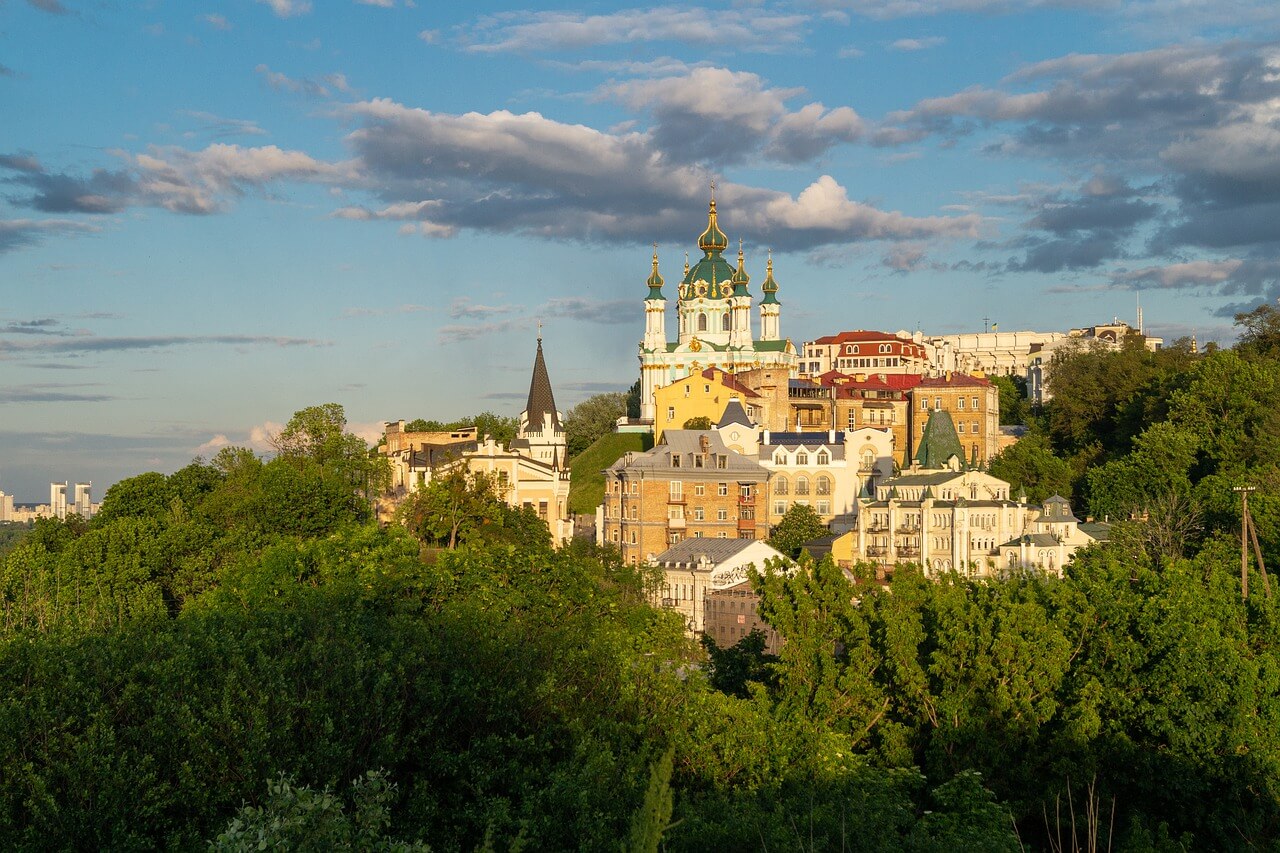
Breath-taking view of Kyiv © Pixabay
As Lisenko acknowledged, Croatia is also very famous in Ukraine too.
„Ukrainians discovered Croatia for themselves. Croatia is a beautiful country. You know that for yourselves. But, for Ukrainians, it is particularly pleasant in Croatia that they don't feel like strangers. But, for Ukrainians is a particular joy that languages are similar and Ukrainians, after several days, start to orient themselves in the language, to understand a bit, and can communicate with Croatians in cafes, restaurants, shops, streets, anywhere“, explained Lisenko for TCN.
He added that a lot of Ukrainians also come to Croatia searching for a job. While this may not be the best thing from the perspective of the Ukrainian economy (same as Croatians leaving Croatia isn't great for Croatian economic interests), Lisenko recognizes that the trend „also brings our two nations close“.
Discover Croatia in your native language
Apart from the article Lisenko commented on, Життя в Хорватії 2021: Витрати, дозволи, стиль життя та зустрічі з людьми, Ukrainians can also follow latest reports on COVID-19 in Croatia as well as 10 речей, які роблять Хорватію найкращою країною (or for English audience, 10 Things Croatia Does Better than Anywhere Else).
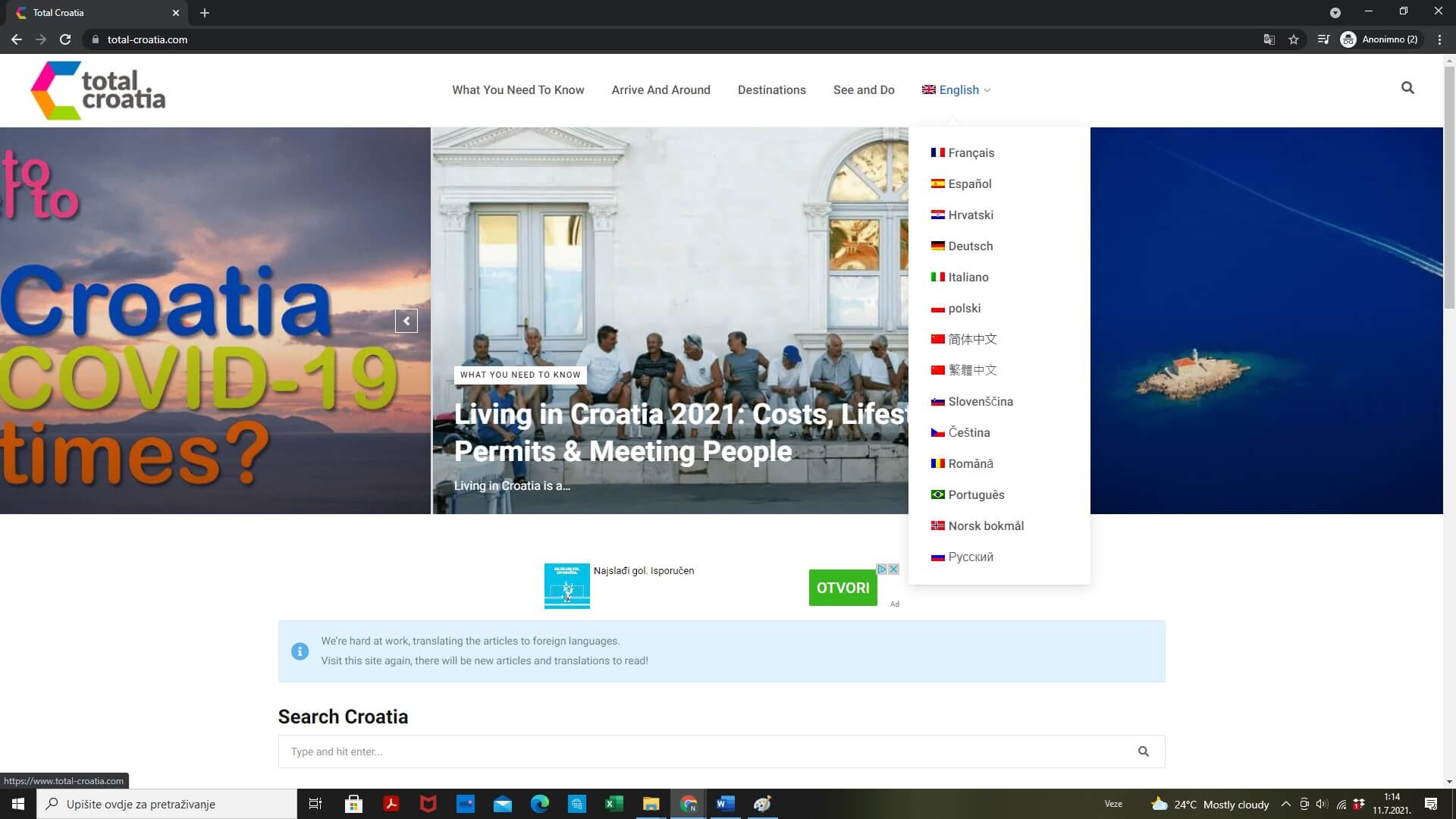
View of Total Croatia site and languages
So far, only these three articles are available in Ukrainian, but no doubt the future will bring more to make Croatia more accessible to beloved Ukrainian visitors.
Currently, TC counts 15 languages with the most translated content from English: Croatian, French, Spanish, German, Italian, Polish, Chinese (both traditional „zh-Hant“ and simplified "zh-Hans"), Slovenian, Czech, Romanian, Portuguese (Brazilian), Norwegian (Bokmål), and Russian.
If you want to learn more about diplomatic relations of Croatia, and everything regarding diplomacy and Croatia, check out TCN's series "Friends of Croatia" by Ivor Kruljac.
For more about Ukraine in Croatia, follow TCN's dedicated page.
Ivo Pilar Social Research Institute Expanding Scientific Cooperation in Sarajevo (BiH)
July 2, 2021 - Dedication to researching and developing the field of social sciences sees the Ivo Pilar Social Research Institute expanding scientific cooperation once again after Željko Holjevac's visit to Sarajevo, in Bosnia and Herzegovina.
The Ivo Pilar Social Research Institute, active as always, continues to expand its cooperation on scientifically explain social issues (symbolically noted as 2021 marks 30 years of the Institute).
As reported on their official website, Institute headmaster dr. Željko Holjevac visited Sarajevo, the capital city of the neighboring Bosnia and Herzegovina, from June 21-23.
The main story of that visit was a signed bilateral cooperation agreement between the Ivo Pilar Social Research Institute and the Sarajevo Catholic Faculty. The agreement was signed by Holjevac and Faculty dean dr. Darko Tomašević.
Additionally, Holjevac was at the reception with Vrhbosanski's vice bishop Vinko Puljić.
„They talked about possible shared projects that would be adjusted to the tradition, culture and developing needs of Croats in Bosnia and Herzegovina“, informed Ivo pilar social research Institute.
Croatian Cultural Society Napredak (progress) also met with Holjevac. Napredak soon celebrates 120 years of work and was founded at the start of the 20th century when the famous Croatian social scientist Pilar was active in Bosnia and Herzegovina. Napredak plans various manifestations for their big anniversary, and dr. Holjevac discussed the possible cooperation in organizing an international scientific symposium regarding the identity of Croats in Bosnia and Herzegovina.
Ivo Pilar Institute working in full speed
This sort of cooperation in regards to researching the Croatian diaspora in the neighboring country where the Croatian historical role and present is significant is nothing new for the Ivo Pilar Social research Institute.
As TCN reported earlier in May, the Institute, along with scientific partners, organized a conference “Identity of Boka Kotorska Croatians“, and the three-day event gathered crucial scientific institutes in Croatia to the town of Tivat in the Bay of Croatian Saints in Montenegro.
Scientists from the Institute were also active this year as they participated at European Conference For Social Work Research (ECSWR), International Society for Ethnology and Folklore (SIEF) Conference, and also by presenting a book on Croatian Mountain Rescue Service in Gospić, or by presenting book Cultural Identity of Vukovar – Contribution to Investigating Heritage and Successors“ – to list some of the activities TCN reported on throughout 2021.
As 2021 marks the 30th year anniversary of the Ivo Pilar Institute, apart from the aforementioned actions (to which we can include nurturing relations with scientific colleagues in Slovakia or opening a new research office on Vis Island), several more goals were envisioned by the end of the year: to publish the first edition of critical translation for the book „South Slavic (Yugoslav) Question“ by Ivo Pilar from 1918, and to make and publish Pilar's Kaleidoskop of Croatian society.
With the active academic dynamic demonstrated by the Institute, there is no doubt there is enough quality and capacity to achieve these goals. It is only a matter of time in such a busy and productive schedule.
Learn more about Croatian Diaspora on our TC page.
For more about science in Croatia, follow TCN's dedicated page.
Brick Yard: Part Exhibition, Part Party, Complete Post-Lockdown Artistic Showcase
June 29, 2021 - A unique event for the Croatian art scene, Brick yard, a meeting point between an exhibition and a party, features four Croatian artists presenting their work and making a statement that not even coronavirus can stop art.
EDITOR'S NOTE: The event was moved to July 3, due to a bad weather forecast
The coronavirus pandemic and the experience of lockdown were either an inspiration for artists or those circumstances just made it easier for them to focus on their work as everything was closed and isolated. Much like almost everything else, the art and culture sector wasn't immune to the pandemic's heavy blow.
With art events and exhibitions still facing challenges, Jasmina Krajačić, Mario Romoda, Apolonija Lučić, and Zorana Unković, instead of waiting for the support by the culture ministry or for galleries to return to being fully functioning institutions, took their faith in their own hands.
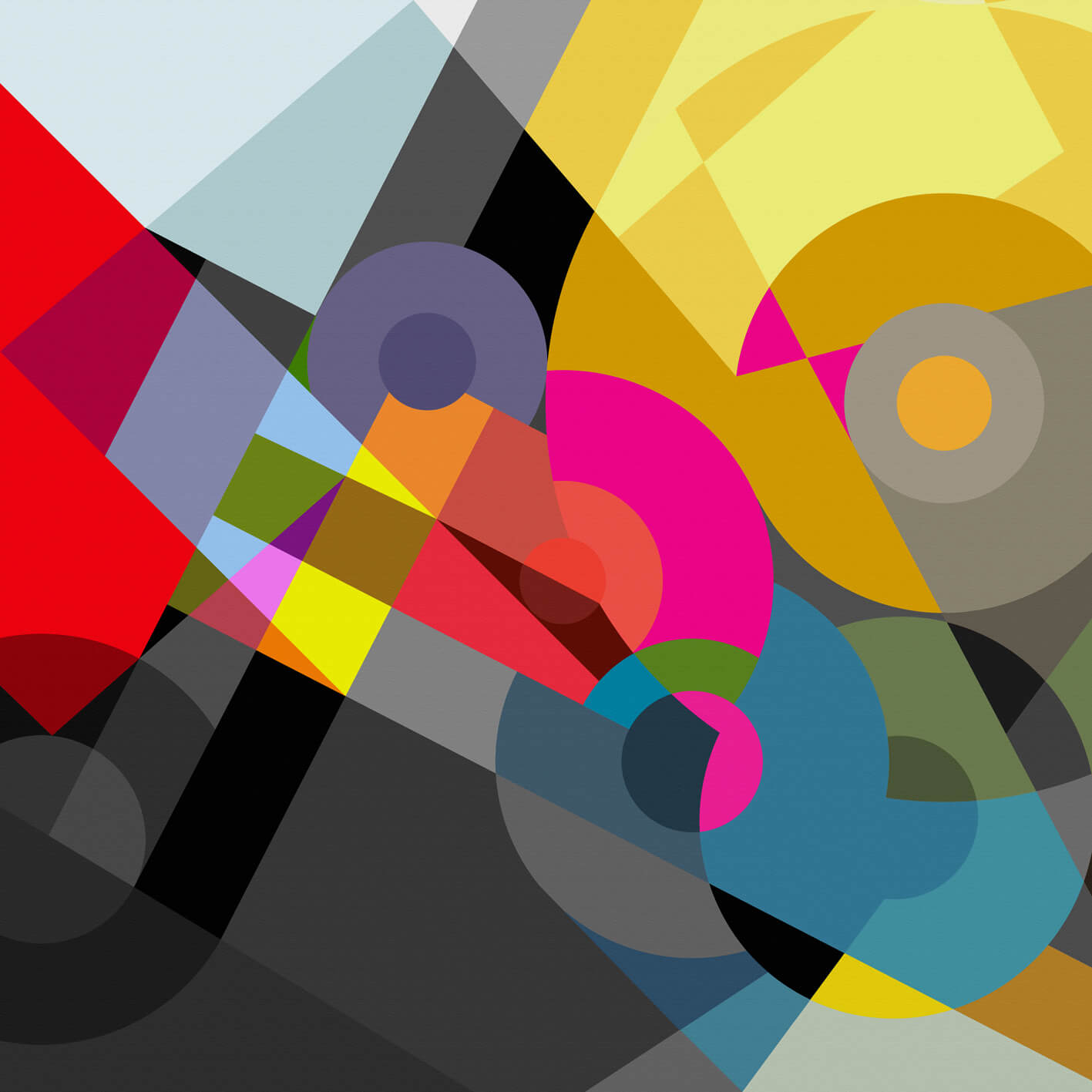
© Jasmina Krajačić
Their initiative for cultural growth, titled Brick Yard, will see these artists present their work in a garden located in Lomnička 1, in a beautiful garden that truly looks like a piece of art itself. Observing art like a plant that, in order to grow, needs to be watered constantly, the collective will showcase their work on July 1 from 5-9 pm.
''The four of us have studios at the same address. It's an old house with quite unusual dimensions and a big garden hiding the view from bypassers. That garden looks like it fell from mars, and it doesn't fit in with the series of new buildings recently built in the neighbourhood, and not a lot of people know about it,'' explained Krajačić, stating that this is the true charm of this project.
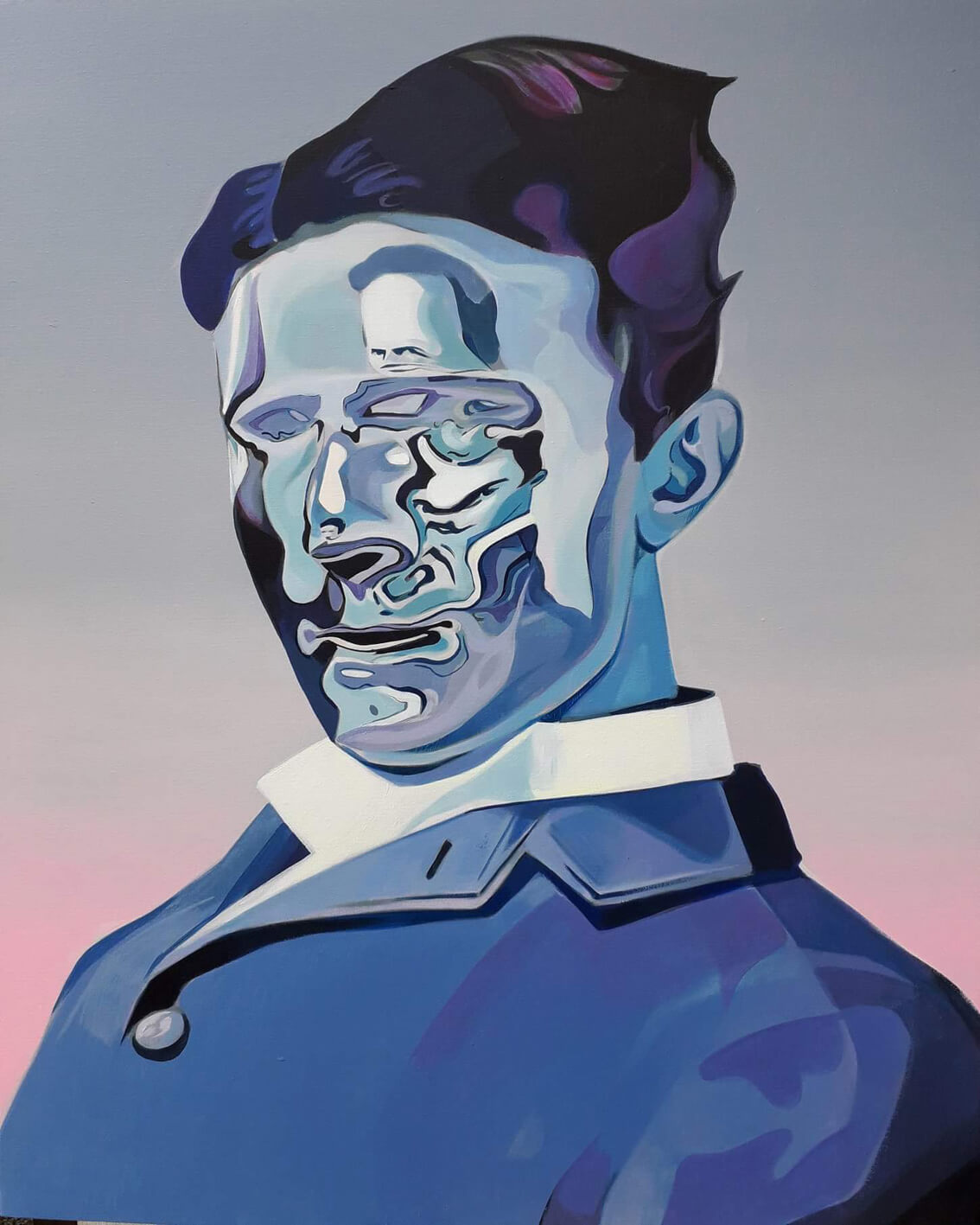
© Mario Romoda
All four artists are renowned names in the world of Croatian contemporary art, and it's interesting to observe different takes on the artistic expressions they have. Romoda is into painting, Krajačić's main focus is geometry and design, Lučić navigates toward drawing and illustrations while Unković is skilled in street art. Echo, reflection, self-therapy, comic strips, and geometry are some of the aspects artists pointed out Brick Yard will feature.
''Since the start of the lockdown, we hung out and worked in that space, killing some time in uncertainty, waiting for the outcome of this whole situation, while also creating new work with our creativity and discipline, which we decided to present in the garden,'' continued Krajačić.
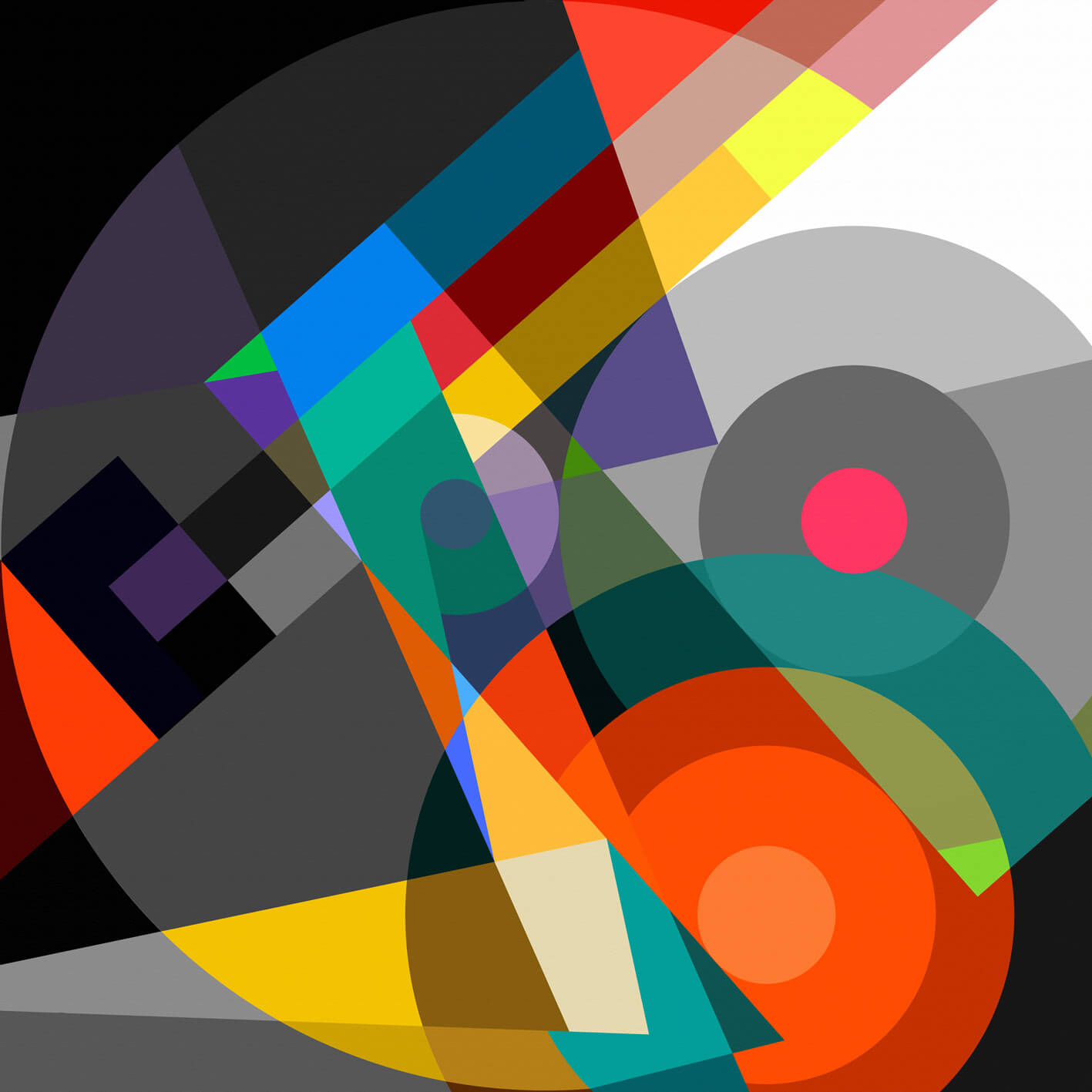
© Jasmina Krajačić
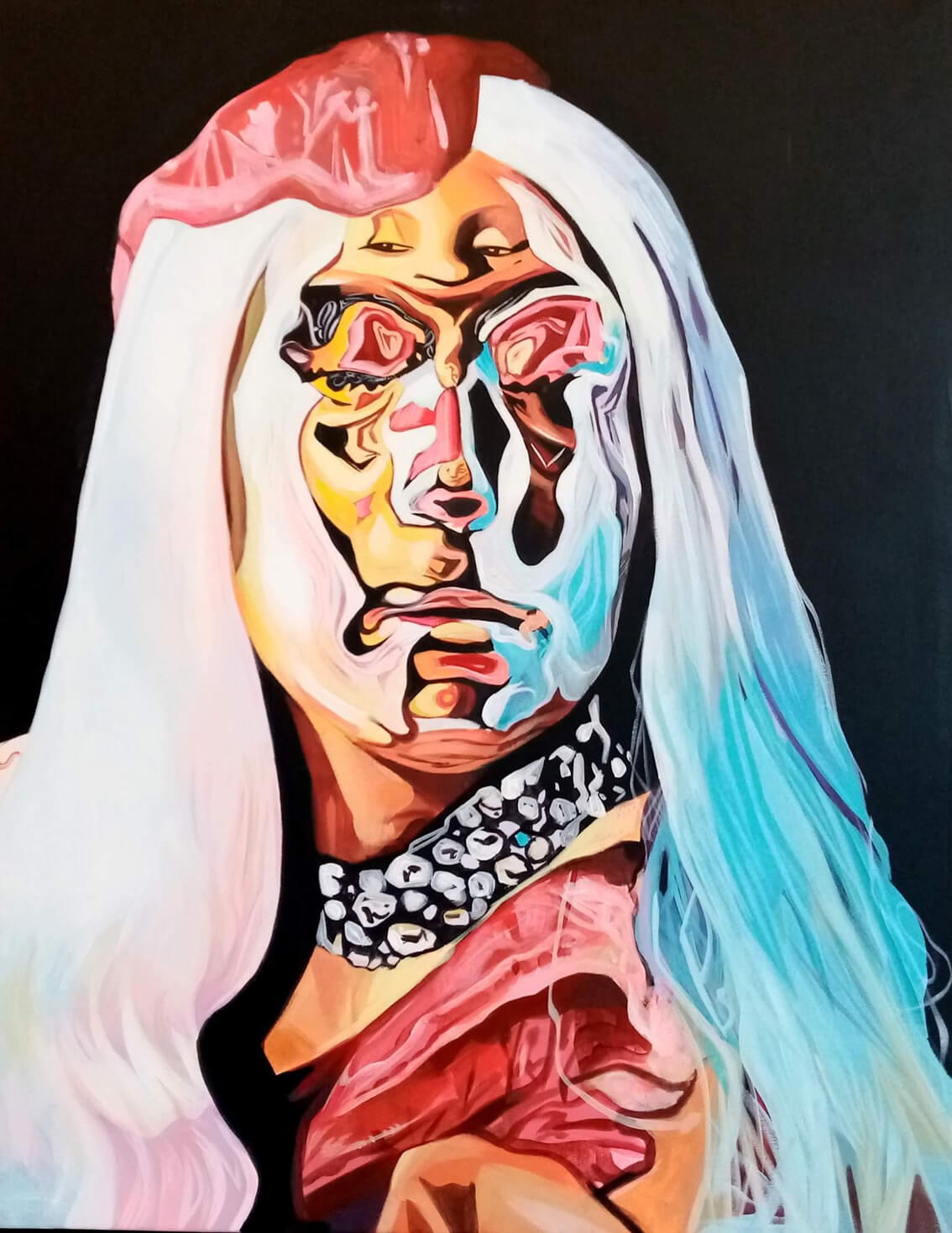
© Mario Romoda
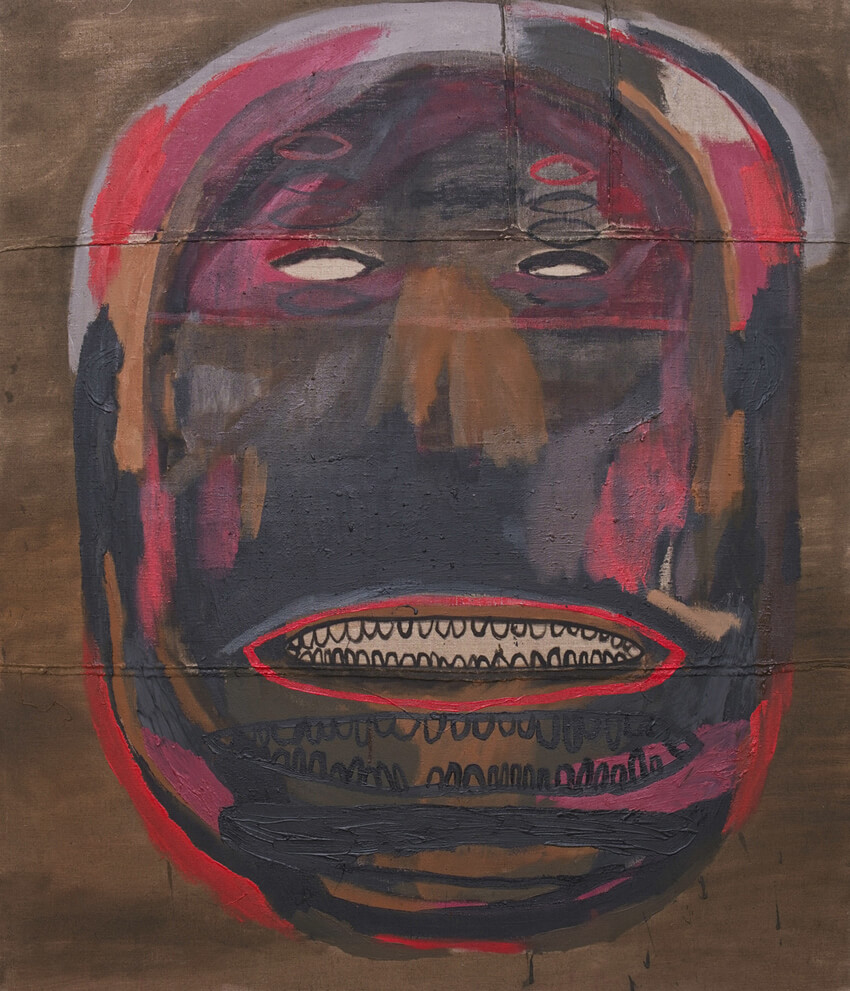
© Zorana Unković
The event, which lay somewhere between an exhibition and a party, saw the artists invite business associates, gallery workers, art critics, and several friends in the hope of ensuring the support the Croatian art scene desperately needs.
''We invited them for an afternoon in an unconventional environment, without big talks and classic gallery protocols,'' pointed out Krajačić, concluding that this type of event is not typical at all on the Croatian art scene. This unusual, experimental event is just as art should be, and the message that the Brick Yard collective differs in expression and stands united in their message is loud and clear.
''Art cannot be stopped as it feeds every atom which thirsty for creative progress. Without it, we're fragile and empty,'' they concluded from Brick Yard.
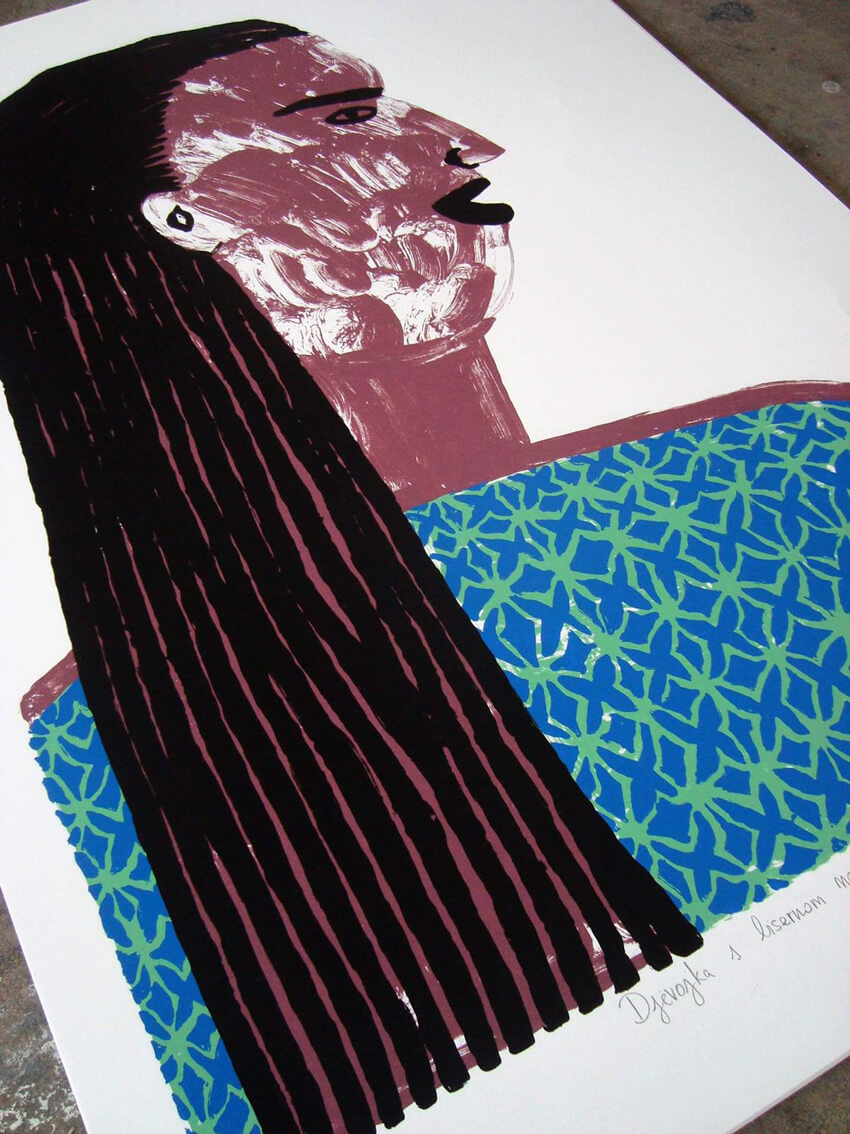
© Apolonija Lučić
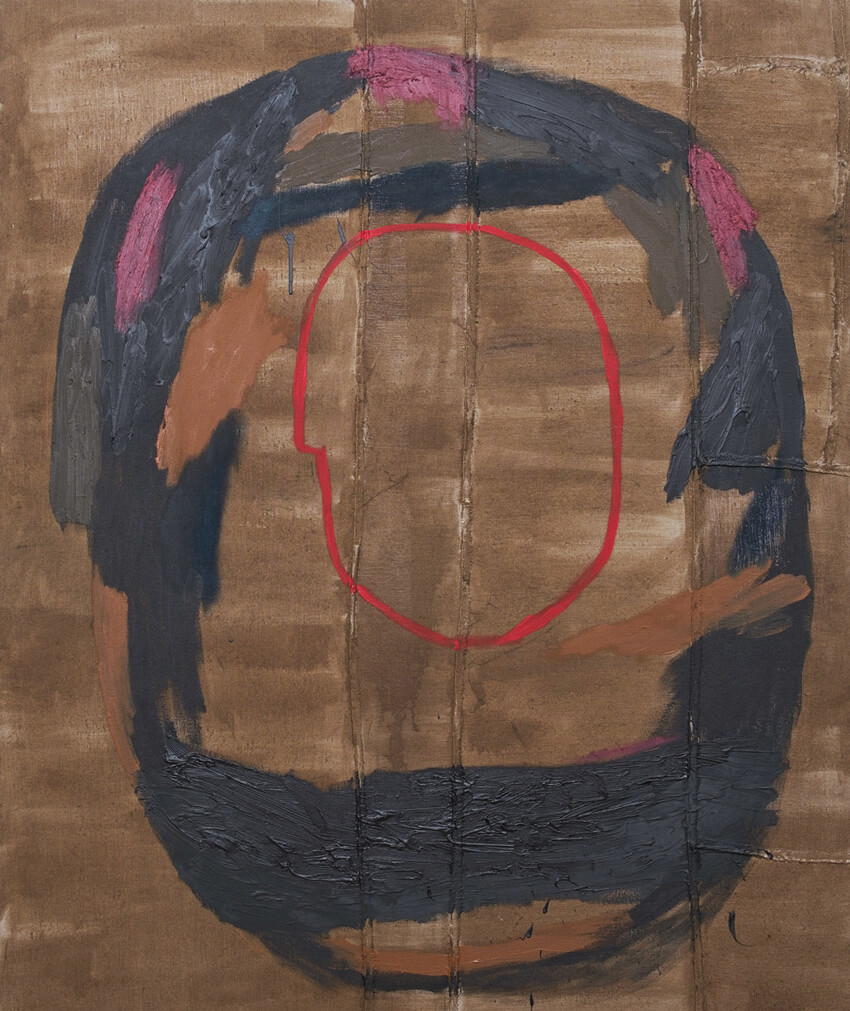
© Zorana Unković
Learn more about Croatian Art Galleries in Zagreb, Dalmatia, Istria & Slavonia on our TC page.
For more about art in Croatia, follow TCN's dedicated page
Professor Slavko Krajcar Death: A Look at the Life of Fantastic FER Professor
June 24, 2021 - Following the professor Slavko Krajcar Death on June 18, take a look at the life of an established educator and scientist whose expertise made a significant contribution to Croatian politics in the energy sector.
„The influence of a teacher can never be erased“, or as an American historian Henry Brook Adams put it, „Teachers affect eternity; no one can tell where their influence stops“- these two are just some of the inspirational quotes about teachers you can find with a little assistance from Google.
Students at the Faculty of Electrical Engineering and Computing (FER) at the University of Zagreb are recognized in Croatia for their innovations. At the end of the day, they owe their excellence to the professors that educated them.
One of such professors was Dr. Slavko Krajcar that sadly, as FER official website reported, passed away on June 18, last week.
"Professor, Dr. Slavko Kranjcar made a significant contribution to the Faculty of Electrical Engineering and Computing as he was a dean of the Faculty from 1998-2002, after which he was the head of the department for high voltage and energetics from 2002-2006. He will remain in permanent memory as a respected scientist, expert, and a colleague“, said FER in an official release.
Kranjcar was also the member and the president of the Managing council at Ruđer Bošković Institute (IRB) that also expressed its condolences.
Born on January 14, 1951, Slavko Krajcar enrolled to study in FER in 1969, followed by graduating from Technical High School in Pula. He majored in FER in 1980 and got his Ph.D. in 1988. His scientific and lecture career started in 1974 when he was an assistant on a manufacturing electric energy course. From there on, he mentored various students on different levels, ten of which earned Ph.D. statuses under his guidance.
Kranjcar was active in the media, giving interviews and writing op-pieces on education issues, specifically the education of engineers in the 21st century.
„Krajcar participated on many domestic projects regarding science or economy as well on international scientific and professional projects. Counting just after the year 2000, he participated in over fifty projects, 36 of which he led. He was one of the leading figures in making Croatian Energetic Strategy (which the parliament accepted in 2010) and the Energetic Efficiency Strategy (2008) as well as executive plans on new strategies (2008-2020)“, recalled FER.
They added Fer rewarded Krajcar in 2002 when he received Josip Lončar's golden plaque for his dedicated scientific and educational work. He also received special recognition for developing SRCE- The Computer Centre of the University of Zagreb in 2011, followed by the Ho CIRED award for contribution in developing the field of electro distribution in Croatia. He also received HRO CIGRE recognition in 2018 for the overall contribution to the electro energetic activities in the Republic of Croatia and the Nikola Tesla Award in 2020 for the contribution to science, education, and profession in the field of electrical engineering and computer sciences and application of those technologies.
Believe it or not, Krajcar even made time to contribute to art and culture as well. He published two books of poetry, edited four books regarding cultural issues, and was the president of the Association for Čakavski dialect (distinct for the use of Ča as a word for what and conversated on coastal Croatia).
Learn more about Croatian inventions & discoveries: from Tesla to Rimac on our TC page.
For more about science in Croatia, follow TCN's dedicated page.


